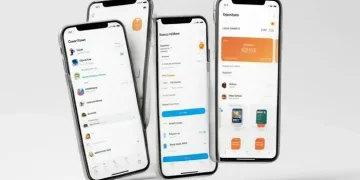Best balance transfer cards to save money and pay off debt faster

Struggling with high-interest debt? Best balance transfer cards could be your ticket to financial freedom. Imagine slashing your interest payments and paying off debt faster—sounds too good to be true? Let’s break it down.
What are balance transfer cards and how do they work?
Balance transfer cards are a type of credit card that allows you to move existing debt from one or multiple high-interest cards to a new card with a low or 0% introductory APR. This can help you save money on interest and pay off debt faster. The process is simple: you apply for a balance transfer card, get approved, and then request the transfer of your existing balances.
How do balance transfers work?
When you initiate a balance transfer, the new card issuer pays off the debt on your old card(s), and the amount is added to your new card’s balance. Most cards offer a promotional period—often 12 to 21 months—with low or no interest on transferred balances. After this period, the standard APR applies.
However, balance transfers usually come with a fee, typically 3% to 5% of the transferred amount. Some cards waive this fee for a limited time, so it’s important to compare offers. Also, keep in mind that making new purchases on the card may not qualify for the promotional rate, and payments usually go toward the lowest-interest balance first.
Who should use balance transfer cards?
These cards are ideal if you have high-interest credit card debt and a good enough credit score (usually 670+) to qualify for a card with a 0% APR offer. They’re also useful if you have a clear plan to pay off the debt before the promotional period ends.
If you’re disciplined with payments, a balance transfer card can be a powerful tool to reduce interest costs and accelerate debt payoff. But if you’re prone to accumulating more debt, it might not be the best solution.
Top benefits of using a balance transfer card
Using a balance transfer card can provide significant financial advantages if used strategically. The primary benefit is the opportunity to save hundreds or even thousands in interest charges during the introductory 0% APR period, allowing you to pay down principal faster.
Interest savings and debt payoff acceleration
By transferring high-interest credit card debt to a 0% APR card, every payment you make goes directly toward reducing your principal balance rather than covering interest fees. This creates a snowball effect where you can potentially become debt-free years earlier than with standard cards.
Simplified payments and organization
Consolidating multiple credit card balances onto one card makes your debt easier to manage. You’ll have one monthly payment instead of juggling multiple due dates and minimum payments, reducing the chance of missed payments that hurt your credit score.
Many balance transfer cards also come with helpful mobile apps and tools to track your payoff progress, set payment reminders, and visualize your debt reduction over time.
Credit score improvement potential
When used responsibly, balance transfer cards can actually help improve your credit score in several ways. By lowering your credit utilization ratio (the amount of credit you’re using versus your total available credit) and making on-time payments, you demonstrate responsible credit management to lenders.
Just be cautious about opening several new accounts at once, as this can temporarily lower your score due to hard inquiries and reduced average account age.
How to choose the best balance transfer card for your needs
Choosing the best balance transfer card requires careful consideration of several key factors to ensure it aligns with your financial situation and goals. The first step is evaluating the length of the 0% APR period – look for cards offering 15 months or longer to maximize your interest-free repayment window.
Understanding fees and terms
Always check the balance transfer fee (typically 3-5% of the transferred amount) and whether any annual fees apply. Some cards offer introductory $0 balance transfer fees which can save you hundreds. Read the fine print about how payments are applied – some issuers apply payments to lower-interest balances first.
Credit score requirements
The best balance transfer cards generally require good to excellent credit (scores of 670+). If your score is lower, consider improving it first or looking at cards designed for fair credit. Check your credit report for free before applying to understand where you stand.
Additional features to consider
Look beyond just the 0% APR offer. Some cards provide rewards programs, free credit score tracking, or financial management tools. However, remember that new purchases typically don’t qualify for the 0% rate unless specifically stated.
Calculate whether the transfer makes financial sense by comparing the transfer fee against your potential interest savings. Use online balance transfer calculators to determine your break-even point and ideal monthly payment amount.
Comparing interest rates and fees of top cards
When comparing balance transfer cards, understanding the fine print on interest rates and fees can mean the difference between saving money and unexpected costs. The introductory APR period varies significantly between cards, ranging from 12 to 21 months of 0% interest on transferred balances.
Key fees to watch for
Most cards charge a balance transfer fee of 3-5% of the amount transferred, though some offer limited-time $0 transfer fee promotions. Watch for annual fees that could negate your savings – many top cards have none. Late payment fees (typically $25-$40) and foreign transaction fees (often 3%) are other potential costs.
Post-introductory rates matter
After the promotional period ends, the regular APR kicks in – these range from 15% to 25% or higher. If you might carry a balance past the intro period, prioritize cards with lower ongoing rates. Some cards offer penalty APRs (up to 29.99%) if you miss payments.
How to compare effectively
Create a spreadsheet comparing: 0% APR duration, transfer fees, regular APR, annual fees, and other charges. Calculate your total potential savings by estimating how much interest you’d pay on your current cards versus the transfer costs. Remember that shorter 0% periods require higher monthly payments to clear your debt in time.
Some issuers offer pre-qualification with soft credit checks that won’t affect your score, letting you compare likely approval odds before applying.
How to apply for a balance transfer card

Applying for a balance transfer card follows a similar process to regular credit card applications, but with some important differences to maximize your approval chances. First, check your credit score – most balance transfer cards require good to excellent credit (670+ FICO score).
Pre-application steps
Use pre-qualification tools offered by many issuers to see which cards you’re likely to get approved for without a hard credit pull. Gather necessary documents including your Social Security number, income details, employment information, and existing debt amounts you plan to transfer.
The application process
When filling out the application, be accurate with your income (include all sources) and housing payments. You’ll typically need to specify: desired credit limit, which balances you want to transfer (account numbers and amounts), and from which creditors.
After approval
Once approved, carefully review the card terms. Some issuers require you to initiate the balance transfer within a specific timeframe (often 30-60 days) to qualify for the promotional rate. Set up automatic payments to avoid missing due dates and losing your 0% APR benefit.
Remember that applying for multiple cards in a short period can hurt your credit score. Space out applications by at least 3-6 months if you’re considering multiple options.
Common mistakes to avoid when using balance transfer cards
While balance transfer cards can be powerful debt-reduction tools, many people make costly mistakes that undermine their benefits. One of the biggest errors is continuing to use the old credit cards after transferring balances, which can lead to accumulating even more debt.
Payment allocation pitfalls
Many card issuers apply payments to the lowest-interest balance first (like new purchases at regular APR), while your transferred balance continues accruing interest. Always check your card’s payment allocation policy and consider paying more than the minimum to tackle the transferred balance faster.
Timing and deadline mistakes
Missing the balance transfer window (typically 30-60 days after account opening) means losing the 0% APR offer. Similarly, failing to pay off the entire balance before the promotional period ends can trigger retroactive interest on the remaining amount with some cards.
Hidden costs and fees
Overlooking the balance transfer fee (usually 3-5% of the amount transferred) can make the move less beneficial than expected. Also, making new purchases on the card often means those charges accrue interest immediately at the regular APR, not the promotional rate.
Another common mistake is closing old accounts immediately after transferring balances, which can hurt your credit utilization ratio and lower your credit score. Keep them open but don’t use them unless you can pay in full each month.
How long does a balance transfer take?
The time frame for completing a balance transfer varies depending on several factors, but most transfers process within 7 to 14 business days. The exact duration depends on the card issuer, the receiving bank, and whether you’re transferring between accounts at the same financial institution.
Factors affecting transfer speed
Electronic transfers between major banks typically complete fastest (often 2-5 business days), while paper check transfers can take longer (7-14 days). The time of submission matters too – requests made early in the week often process faster than weekend submissions.
What happens during processing
Your new card issuer sends a payment to your old creditor, which then applies it to your account. During this period, you’re still responsible for minimum payments on the old card until the transfer fully processes. Some issuers provide tracking options to monitor transfer status.
When interest charges stop
Interest on the transferred balance typically stops accruing on your old card once the payment is received. However, the transfer date (when the 0% period begins) is usually when the new card issuer initiates the transfer, not when it completes at the old creditor.
For large transfers, consider making minimum payments on the old card until confirmation of completion to avoid late fees. Some issuers may expedite transfers if you call customer service.
Tips to maximize savings with a balance transfer card
To truly maximize savings with a balance transfer card, strategic planning is essential. First, calculate the optimal payment amount to ensure you’ll pay off the entire balance before the 0% APR period ends. Divide your transferred balance by the number of months in the promotional period, then add a buffer.
Payment strategy
Set up automatic payments for at least the calculated monthly amount to avoid missed payments that could cancel your promotional rate. Consider paying biweekly instead of monthly – this can help you pay down the principal faster without feeling the pinch of larger monthly payments.
Spending discipline
Avoid using the balance transfer card for new purchases unless it offers a separate 0% APR on purchases. Most cards apply payments to the lowest APR balance first, meaning new purchases could linger at high interest while your transferred balance sits untouched.
Monitoring and adjustments
Regularly check your progress toward payoff and adjust payments if your financial situation improves. If you receive bonuses or tax refunds, consider applying a portion to your balance. Some cards allow you to transfer additional balances during the promotional period – evaluate if this makes sense for your situation.
As the promotional period nears its end, assess whether you’ll need another transfer or if you can pay off the remaining balance. Don’t wait until the last month – start planning at least 3 months before the rate increases.
Alternatives to balance transfer cards if they don’t fit your needs
If balance transfer cards aren’t the right solution for your financial situation, several alternatives might better suit your needs. One option is a personal loan, which provides a fixed repayment schedule and often lower interest rates than credit cards, though without the 0% APR benefit.
Debt management plans
Nonprofit credit counseling agencies offer debt management plans (DMPs) that can negotiate lower interest rates with your creditors. These typically consolidate payments into one monthly amount with fixed repayment terms of 3-5 years, though they may require closing your credit cards.
Home equity options
Homeowners might consider a home equity loan or line of credit (HELOC), which typically offer lower interest rates than credit cards. However, these use your home as collateral, putting your property at risk if you can’t make payments.
Other credit options
A 0% APR credit card for new purchases (rather than balance transfers) could help if you need to finance necessary expenses without interest. Some lenders offer debt consolidation loans specifically designed to pay off multiple credit card balances.
For those with poor credit, a secured credit card or asking creditors for hardship programs might be better options than traditional balance transfers. Always compare the total costs of any alternative before committing.
Making the Right Choice for Your Debt
Balance transfer cards can be powerful tools when used correctly, but they’re not the only solution available. Whether you choose a 0% APR card, personal loan, or debt management plan, the key is finding an approach that fits your specific financial situation and goals.
Remember that the best debt solution is one you can stick with consistently. Consider your spending habits, credit score, and ability to make regular payments before committing to any strategy. Small, consistent payments often work better than ambitious plans that are hard to maintain.
Whichever path you choose, the most important step is taking action to address your debt. With careful planning and disciplined execution, you can reduce your interest costs and work toward becoming debt-free.






